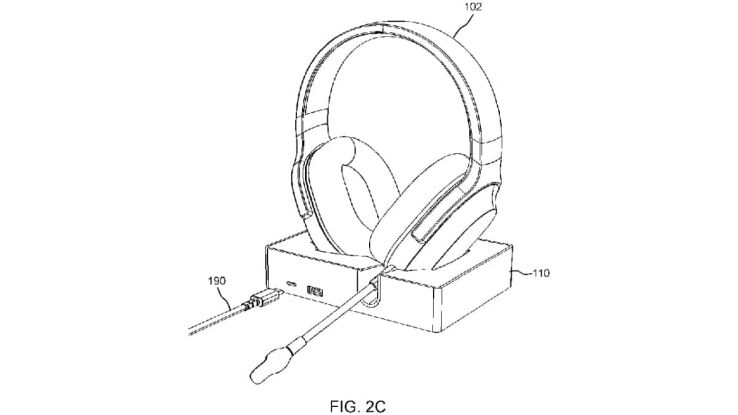Razer files patent for wireless headset charging cradle
A suspicious lack of RGB, though...

WePC is reader-supported. When you buy through links on our site, we may earn an affiliate commission. Prices subject to change. Learn more
Razer is one of the frontrunners when it comes to gaming technology. They make some of the best mice, headsets, and other such gaming peripherals, all emblazoned with that classic triple snake.
This isn’t to say that they’ve perfected it, and when it comes to headsets, in this particular area, they still have some work to do.
However, when it comes to gaming headsets, there is a gold standard that no one seems to be able to touch, the Astro A50 wireless headset.
One of the reasons for the Astro A50’s enduring popularity (despite a $300+ price and only minor revisions since its release over 10 years ago), is the charging dock+mixamp.
READ NOW: Logitech G Pro X Superlight vs Razer Viper V2 Pro
So, as we were being nosey, looking through Patents to get ahead of the game, we were unsurprised to see a Patent Application from the Singaporean peripheral giant for a ‘Charging station for wireless headphones’, filed in March of 2022. This is a pretty solid hint that wireless charging might be coming to Razer headsets.
You can read through the patent via Google Patents if you’re curious about the ins and outs.
Razer headset charging cradle patent
Generally, most headsets are plugged in and dumped on a desk to charge. This is not an elegant solution for obvious reasons and often leads to the purchase of a headphone stand, which is an expensive solution for tidiness, and little else. This is why an official charging cradle is a big deal.
Razer headset charging cradle potential features
There are other interesting things here too. For example, the exploded view of the patent, viewable below, shows the adapter plate of the charging cradle is removable.
Not only is it removable, but the charging contact on the plate is connected to the main board by a removable cable, not soldered. This means that the charging dock might not only be compatible with the Razer Barracuda headset. (Not named in the patent, but the illustration doesn’t look like any of Razer’s other products.)
Given that the charging cradle appears to have been designed with hot-swappable adapter plates, it means that there’s a good chance of Razer creating adapter plates to fit all of their headsets, as long as the charging port is on the bottom of the earcup, of course.
We can’t currently be sure that the charging cradle will ship in different configurations for compatibility with different headsets, or whether you’ll purchase the adapter plate yourself.
However, with the industry’s current opposition to user repairability, we assume it’ll all be sealed up, and the aforementioned detachable cable is probably there to make shipping the charging cradle in different SKUs for different headsets easier.
Other than this, the charging cradle looks to be powered by USB Type-C and has an additional Type-A port for charging other stuff. There’s also a light on the user-facing side which “may be configured to display lighting effects (or light effects) based on the battery level of the wireless headset”.
Additionally, there is a small part labeled ‘170’ which looks to be designed to sit in the headset constantly and might be magnetic, to make aligning the headset to charge easier, ass having an entire male end of a USB cable poking out is just asking for scratches or worse damage.
With all that said, Patents are not announcements, meaning that we might not see a razer headset charging cradle for a long time. However, we’d like it sooner rather than later.